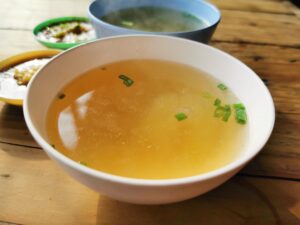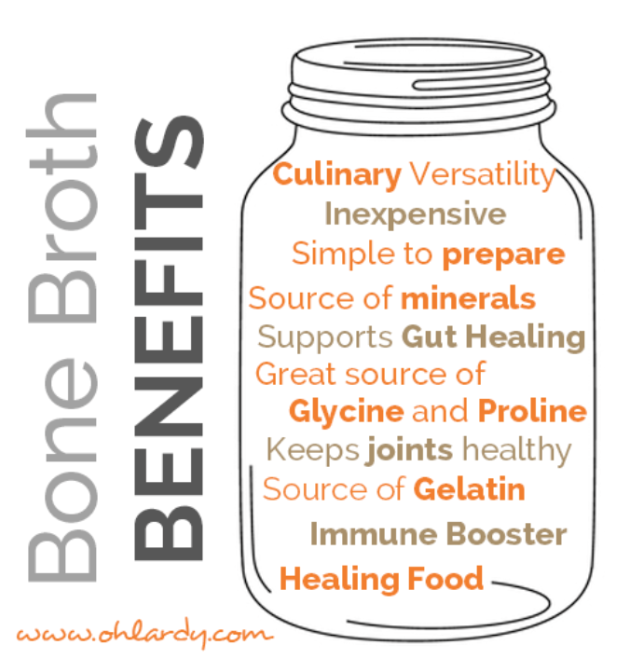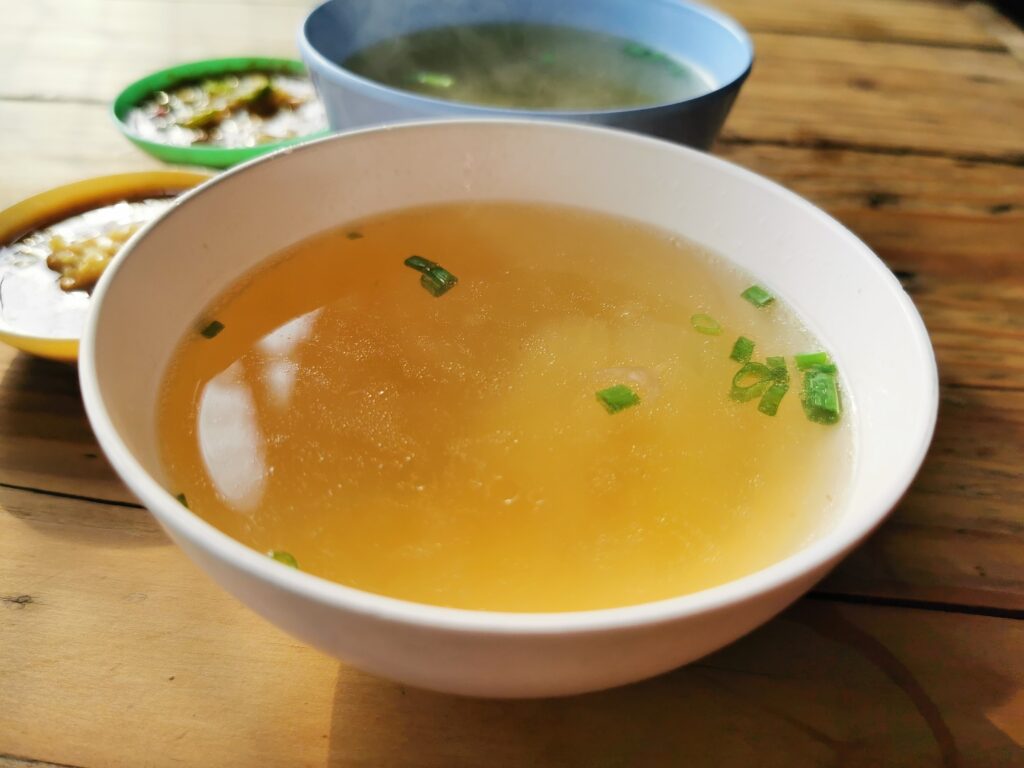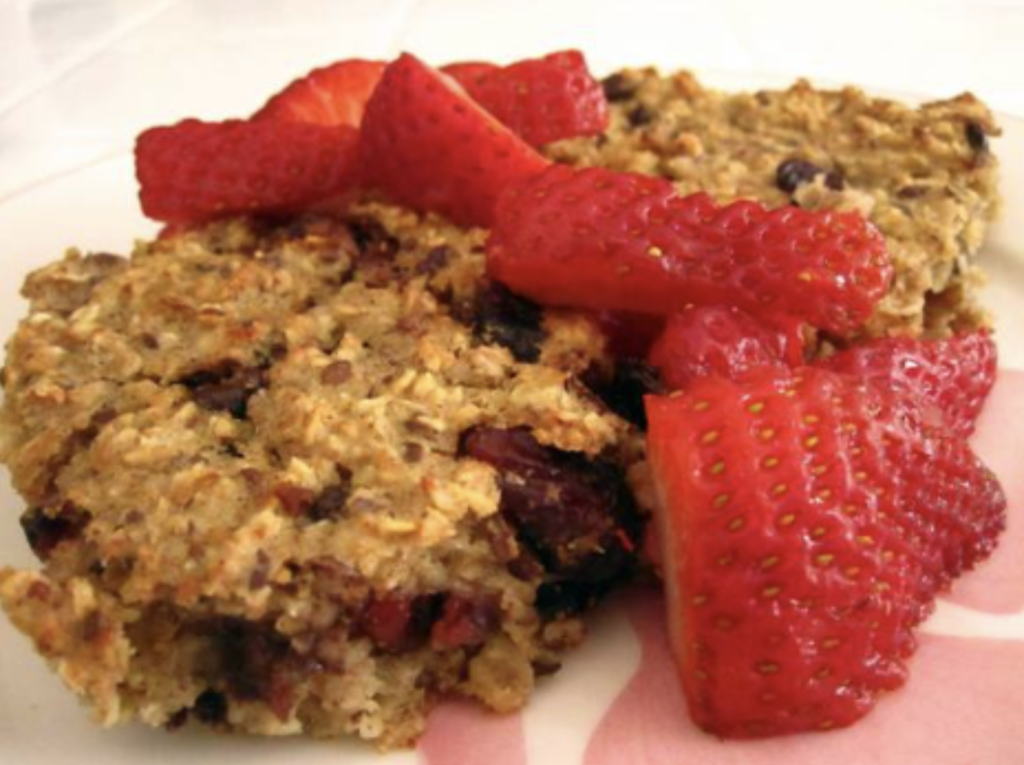Bone Broth Recipe - Revitalize Health and Wellness

This Bone Broth Recipe will change how you live. Revitalize your health and wellness with this vercitile soup. Learn how to make and use this broth.
Type: Soup
Cuisine: American
Keywords: Bone Broth
Preparation Time: 60 Minutes
Cooking Time: 8-48 Hours
Total Time: 49 Hours
Recipe Ingredients:
- 2 pounds (or more) of bones (beef, chicken, fish) from a healthy source (organic, wild, grass fed…)
- 1 onion
- 2 carrots
- 2 stalks of celery
- 2 tablespoons Apple Cider Vinegar
- Optional: 1 bunch of parsley, 1 teaspoon or more of sea salt, 1 teaspoon peppercorns, additional herbs or spices to taste. I also add 2 cloves of garlic for the last 30 minutes of cooking.
Recipe Instructions:
Equipment:
Roast Bones:
Cold Soak:
Add Veggies:
Boil:
Bring the broth to a boil. Once it has reached a vigorous boil, reduce to simmer until done. These are the typical simmer times: - Beef broth/stock: 48 hours - Chicken or poultry broth/stock: 24 hours - Fish broth: 8 hours
During the first few hours of simmering, remove the impurities that float to the surface. A frothy/foamy layer will form and it can be easily scooped off with a big spoon. Throw this part away. Check it every 20-30 minutes for the first 2 hours to remove this. Grass-fed and healthy animals will produce much less of this than conventional animals.
How to Use Bone Broth
Drink it like “tea.” Use as the liquid base for soups, stews, gravies, sauces, and reductions. Use to sauté or roast vegetables.
Healing Properties
- Helps heal the gut- boosts intestinal health, and reduces inflammation.
- Supports joint health- bone broth contains healthy doses of glucosamine, chondroitin, collagen, and gelatin.
- Boosts the immune system and reduces inflammation.
- Promotes tissue regeneration- good source of glutathione that helps repair and support every cell in the body, detoxing, and is an antioxidant.
- Detoxifying- promotes healthy gut mobility and helps remove toxins and heavy metals.
- Healthy skin- collagen support.
- Brain Health- the glycine and chondroitin in bone broth support nerve fibers.
- Heart healthy- glycine reduces the severity of heart attacks and helps reduce inflammation.
- Reduces Anxiety and Depression- glycine has been shown to help with these issues.
- Promotes good sleep- glycine supports relaxation and restful sleep.
Nutrients in Bone Broth
Arginine: An amino acid that’s essential for a healthy immune system and wound healing. It’s also needed for the production of growth hormones, liver cell regeneration, and the production of sperm.
Chondroitin & Glucosamine: Chondroitin and glucosamine are some of the components that make up cartilage, which is the structure that acts like a cushion between joints. They are also a component of tendons and ligaments. Since they are the building blocks of these structures, chondroitin and glucosamine can significantly improve the health of your joints. In fact, studies show that taking a chondroitin and glucosamine supplement can significantly reduce pain from arthritis and improve joint mobility. But I usually recommend bone broth since it’s much cheaper than these supplements.
Collagen: Collagen makes up for a whopping 30% of the protein in your body. It’s needed to build and preserve healthy cartilage, ligaments, tendons, bone, and skin. This is why you will often see collagen supplements for joints or promoting healthy skin—as you age, the level of collagen in your body decreases which can make your skin lose its youthful look.
Gelatin: When bones are simmered down to make bone broth, some of the collagen in the cartilage transforms (hydrolyzes) into gelatin. It acts very similar to collagen, and it is the compound that’s responsible for the gelatinous consistency of broth or stock once it has cooled.
Glycine: Glycine is an amino acid (a building block of protein) that makes up more than a third of collagen. It also acts as a neurotransmitter, which are chemicals that help the brain with communication and signaling.
Glutamine: Glutamine is a conditionally essential amino acid. This means your body sometimes won’t produce enough of it on its own. It’s the most abundant amino acid in your blood and responsible for a wide range of functions, including protein synthesis, maintaining a pH balance in your kidneys, a source of cellular energy, and much more.
Proline: Proline is another amino acid found in the structure of collagen. Your body is only able to produce proline in small amounts. So if you don’t get proline through your diet, you could be starving your body of this important amino acid. A deficiency may not cause a lot of issues, but it’s good to give your body everything it needs to run efficiently.
Bone marrow: Have you ever broken open a chicken bone or looked at the center of a beef bone? Inside you will see a deep red color substance. This is red bone marrow. It’s where new immune cells and red blood cells are manufactured. Towards the outside of the red bone marrow lies yellow bone marrow, which contains healthy fats. Both red and yellow bone marrow is responsible for bone broth’s rich taste. Marrow is also associated with several health benefits, including a decreased risk of heart disease, diabetes, and obesity-related cancers.
Minerals: Bone broth is full of minerals, including calcium, copper, magnesium, iron, magnesium, manganese, phosphorus, potassium, sodium, and zinc. Your body needs these minerals for a wide range of processes. Please note that bone broth won’t contain minerals unless it’s made with an acid such as apple cider vinegar. The acid releases the minerals from the bones and vegetable fiber so that it is available for the body to absorb.
Essential amino acids: Amino acids are organic compounds that combine to form protein. Protein is the building block of muscles, skin, enzymes, and hormones, and it plays an essential role in all body tissues. When proteins are digested or broken down, amino acids are left. The human body uses amino acids to make proteins to help the body:
- Break down food
- Grow
- Repair body tissue
- Perform many other body functions
- Amino acids can also be used as a source of energy by the body.
Essential amino acids cannot be made by the body. As a result, they must come from food.
The nine essential amino acids are histidine, isoleucine, leucine, lysine, methionine, phenylalanine, threonine, tryptophan, and valine. You do not need to eat essential and nonessential amino acids at every meal, but getting a balance of them over the whole day is important.
Protein deficiency signs may include skin, hair & nail problems, edema, fatty liver, loss of muscle mass, increased risk of bone fracture, and increased severity of infections.




